
 |
|
An
18 Ton Nephrite Jade Boulder Found
in Canada 2000
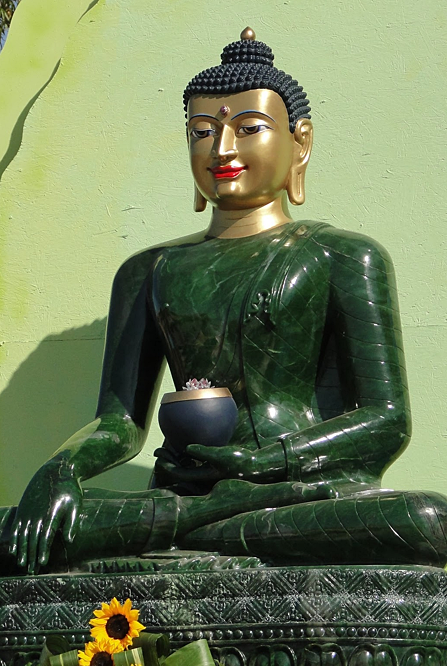 Buddha carved from
gemstone-quality jade. Weighing 4.65 tons and
considered priceless, the Buddha was carved from a
mammoth boulder of nephrite jade sourced in
Northwest British Columbia, Canada. Dubbed the Polar
Pride boulder when it was discovered in 2000, gem
experts called the 18-ton specimen “the find of the
millennium.”
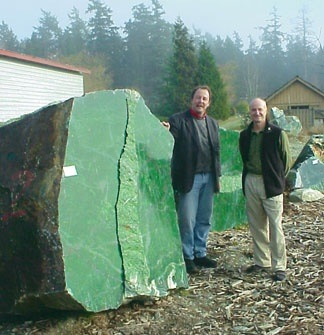 The Polar Pride was split in two and sold for an undisclosed price to an international Buddhist organization headed by the Nepalese monk Lama Zopa Rinpoche. In 2006, the twin blocks were shipped from Vancouver to Thailand, where master craftsmen began their two-year labor of love – freeing the smiling, meditating figure of Buddha from an enormous block of gem-quality jade. Rinpoche said that the statue made from the majestic boulder would illuminate the world and bring peace, happiness and solace and help prevent destruction, including war. 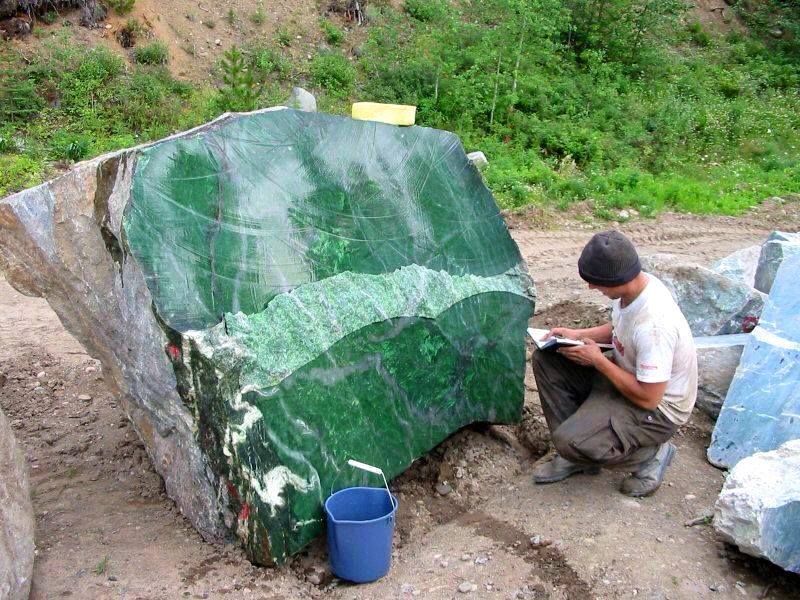 The colossal Buddha has been consecrated by the Dalai Lama and has been on a world tour since 2009, with stops in Asia, Australia, North America and Europe. At the end of its tour, the Jade Buddha for Universal Peace will be brought to its permanent home – The Great Stupa of Universal Compassion in Bendigo, Australia. According to the Jade Buddha’s official website, the purpose of exhibiting the statue around the world is for everyone, irrespective of their religion, to take a moment to reflect upon peace; peace for the world; peace in their relationships; peace for their families and friends; peace at work; peace in their mind. We hope that such positive inspiration will bring joy and motivation in the lives of those who are able to see the Jade Buddha. Credits: Posted 2nd August 2013 by blueiscoool Labels: 'The Polar Pride' An 18 Ton Nephrite Jade Boulder Found in Canada 2000 blogger blueiscoool blueiskewl priceless Solid Jade Buddha treasure Source: http://blueiskewl.blogspot.com/2013/08/18-ton-nephrite-jade-boulder-found-in.html |
|
Nephrite
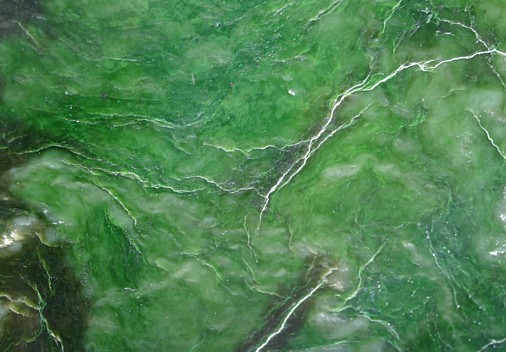 Nephrite is a variety of the
calcium and magnesium-rich amphibole mineral
actinolite (aggregates of which also make up one form
of asbestos). The chemical formula for nephrite is
Ca2(Mg, Fe)5Si8O22(OH)2. It is one of two different
mineral species called jade. The other mineral species
known as jade is jadeite, which is a variety of
pyroxene. While nephrite jade possess mainly grays and
greens (and occasionally yellows, browns or whites),
jadeite jade, which is rarer, can also contain blacks,
reds, pinks and violets. Nephrite jade is an
ornamental stone, used in carvings, beads, or cabochon
cut gemstones.
Nephrite can be found in a translucent white to very light yellow form which is known in China as mutton fat jade, in an opaque white to very light brown or gray which is known as chicken bone jade, as well as in a variety of green colors. Canada is the principal source of modern lapidary nephrite. Nephrite jade was used mostly in pre-1800 China as well as in New Zealand, the Pacific Coast and Atlantic Coasts of North America, Neolithic Europe, and southeast Asia. Name The name nephrite is derived from lapis nephriticus, which in turn is derived from Greek λίθος νεφρίτίκος; νεφρός λίθος, which means 'kidney stone' and is the Latin and Greek version of the Spanish piedra de ijada (the origin of "jade" and "jadeite"). Accordingly, nephrite jade was once believed to be a cure for kidney stones. Other names Besides the terms already mentioned, nephrite has the following synonyms and varieties: aotea, axe-stone, B.C. jade, beilstein, kidney stone, lapis nephriticus, nephrit, nephrita, pounamu, New Zealand greenstone, New Zealand jade, spinach jade (dark grayish green), and talcum nephriticus. Tomb jade or grave jade are names given to ancient burial nephrite pieces that have a brown or chalky white texture as a surface treatment. History Neolithic and Chalcolithic Europe A lot of nephrite tools and
amulets are known since the Early Neolithic (VII mill.
BC) to the Late Chalcolithic (V mill. BC) on the
Balkans (mainly Bulgaria; also in Greece, Serbia,
Croatia) from two or more unknown sources - Balkan
"nephrite culture". Such tools are found in the Later
Neolithic of Poland (from the most probable local
source Jordanov), Sardinia (Italy) and Switzerland.
Single or just a few finds of nephrite artifacts are
reported also from some other European countries.
Prehistoric and historic China During Neolithic times, the key
known sources of nephrite jade in China for
utilitarian and ceremonial jade items were the now
depleted deposits in the Ningshao area in the Yangtze
River Delta (Liangzhu culture 3400–2250 BC) and in an
area of the Liaoning province in Inner Mongolia
(Hongshan culture 4700–2200 BC). Jade was used to
create many utilitarian and ceremonial objects,
ranging from indoor decorative items to jade burial
suits. Jade was considered the "imperial gem". From
about the earliest Chinese dynasties until present,
the jade deposits in most use were from the region of
Khotan in the Western Chinese province of Xinjiang
(jade deposits from other areas of China, such as
Lantian, Shaanxi, were also in great demand). There,
white and greenish nephrite jade is found in small
quarries and as pebbles and boulders in the rivers
flowing from the Kuen-Lun mountain range northward
into the Takla-Makan desert area. River jade
collection was concentrated in the Yarkand, and the
White Jade (Yurungkash) and Black Jade (Karakash)
Rivers in Khotan. From the Kingdom of Khotan, on the
southern leg of the Silk Road, yearly tribute payments
consisting of the most precious white jade were made
to the Chinese imperial court and there transformed
into objets d'art by skilled artisans, as jade was
considered more valuable than gold or silver.
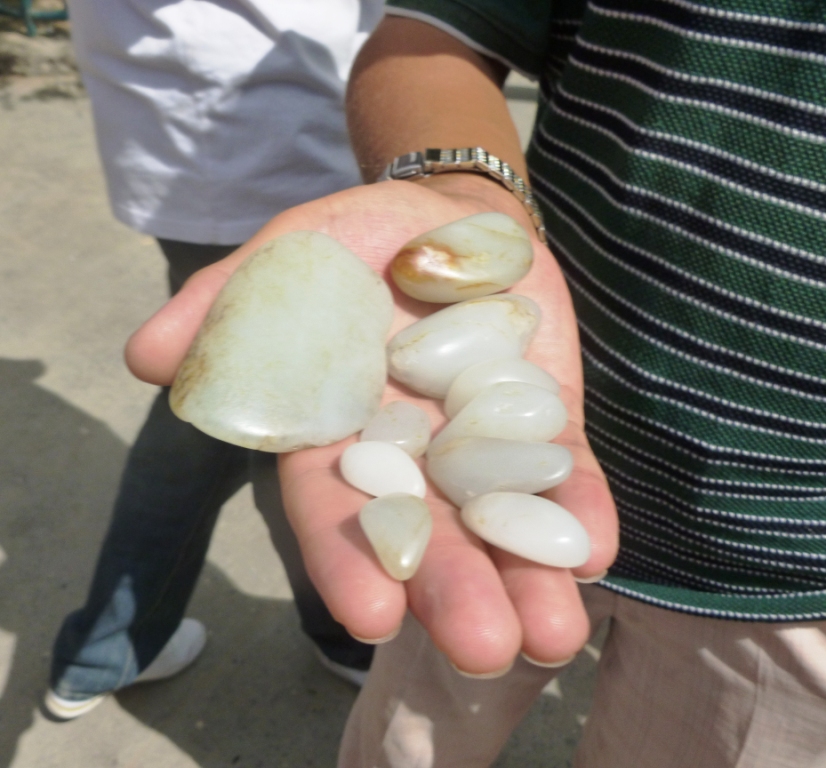 "Mutton
fat" jade for sale at Hotan Jade Market
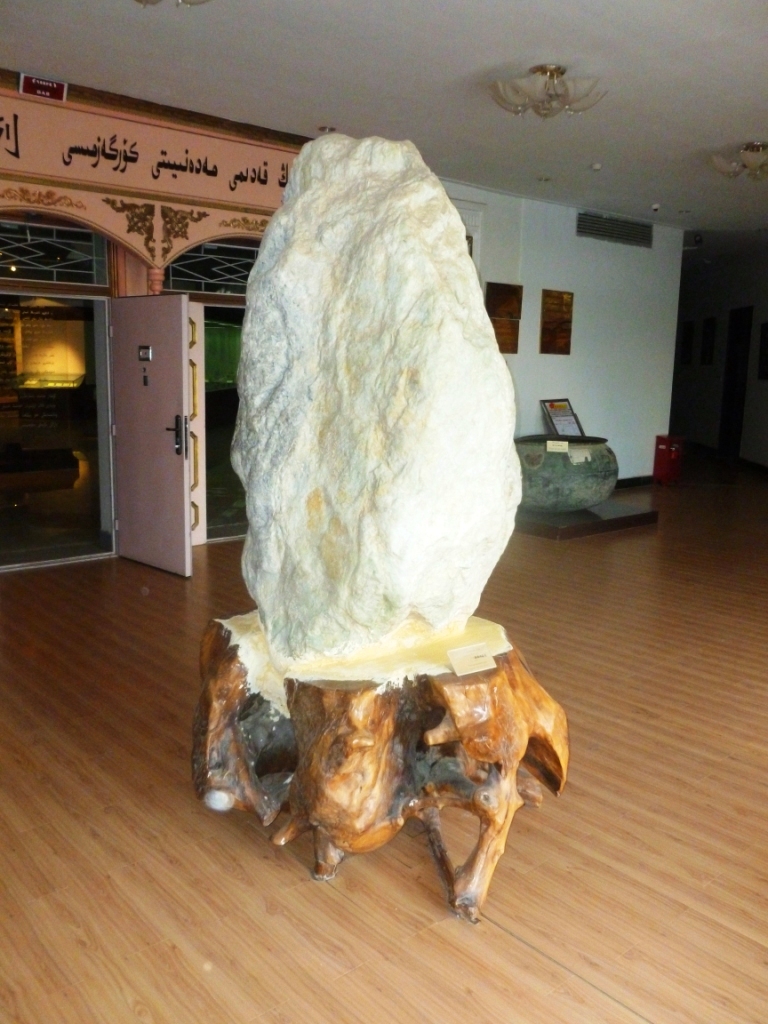 Large
"mutton fat" nephrite jade displayed in Hotan
Cultural Museum lobby.
Nephrite jade in New Zealand is
known as pounamu in the Māori language, and is highly
valued, playing an important role in Māori culture. It
is considered a taonga, or treasure, and therefore
protected under the Treaty of Waitangi, and the
exploitation of it is restricted and closely
monitored. The South Island of New Zealand is Te Wai
Pounamu in Māori — "The [land of] Greenstone Water" —
because that is where it occurs.
Weapons and ornaments were made of it; in particular the mere (short club), and the hei-tiki (neck pendant). These were believed to have their own mana, were handed down as valuable heirlooms, and often given as gifts to seal important agreements. It was also used for a range of tools such as adzes, as Māori had no metal tools. Commonly called "greenstone", jade jewellery in Māori designs is widely popular with tourists – although much of the jade itself is now imported from British Columbia and elsewhere. 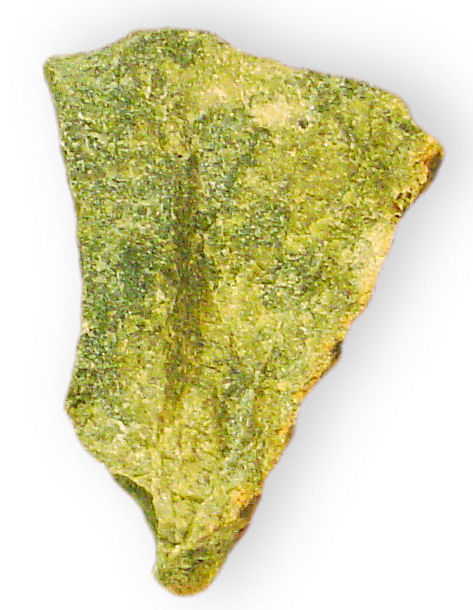 Nephrite
from Wyoming
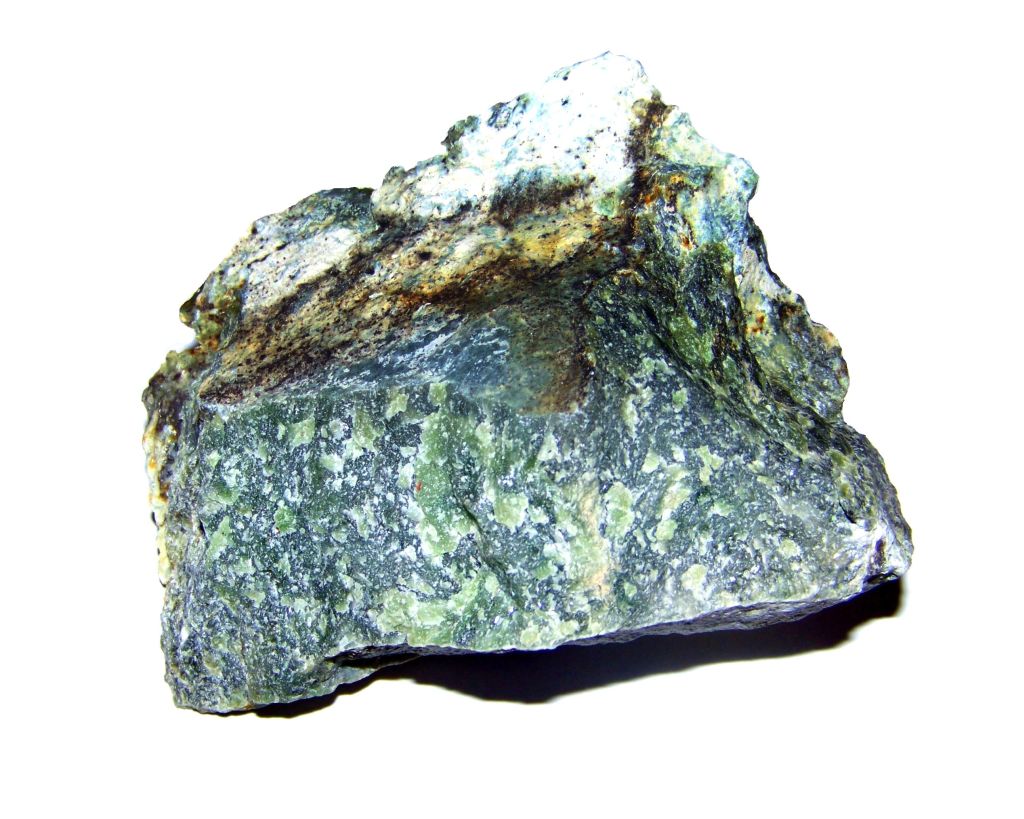 Nephrite from Jordanów Śląski (Poland) References and Links |
| |
|
FAIR USE
NOTICE: This page contains copyrighted material the
use of which has not been specifically authorized by
the copyright owner. Pegasus Research Consortium
distributes this material without profit to those who
have expressed a prior interest in receiving the
included information for research and educational
purposes. We believe this constitutes a fair use of
any such copyrighted material as provided for in 17
U.S.C § 107. If you wish to use copyrighted material
from this site for purposes of your own that go beyond
fair use, you must obtain permission from the
copyright owner.
|
 Webpages © 2001-2019 Pegasus Research Consortium |